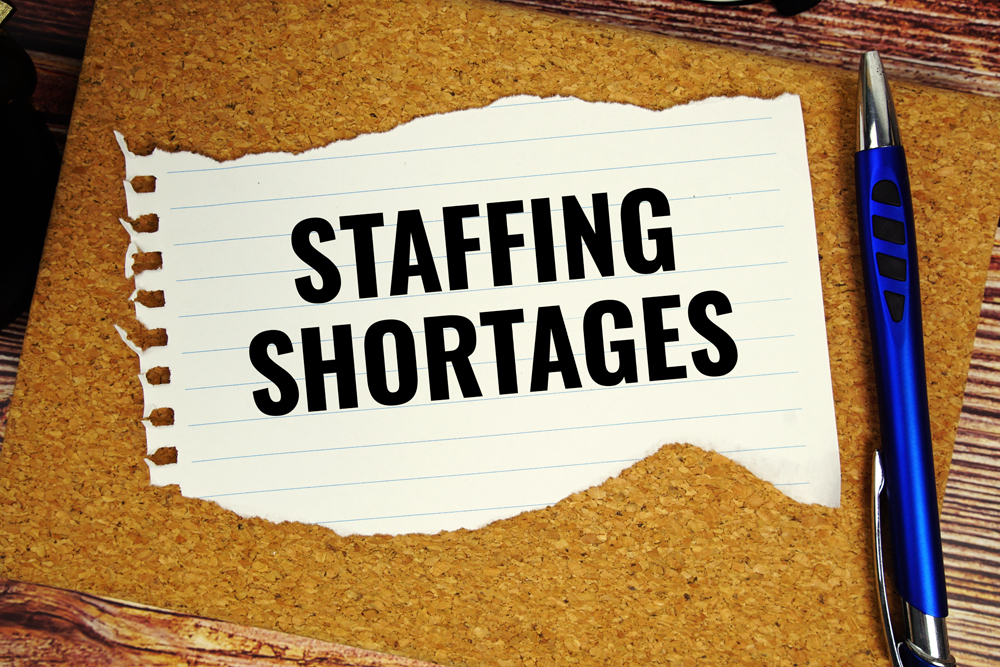Much has been made about the veterinarian shortage within the Veterinary profession and much has been done in an attempt to combat it. However, as we creep closer and closer to the middle of the decade, the veterinarian shortage has proven itself to be a continuing crisis.
I have written multiple articles on the subject and have detailed the causes, but I’d like to “drill down” into the reasons further to paint an accurate picture of what’s happening in the job market and within the profession. Pet ownership has been steadily increasing, especially in the wake of the COVID-19 pandemic, which saw many people turning to pets for companionship during lockdowns. This rise in pet numbers has translated into a higher demand for Veterinary services.
Mars Veterinary Health projects that spending on pet healthcare services will increase by 3-4% per year beyond inflation over the next 8-10 years. This growth necessitates a substantial increase in the number of veterinarians to meet the demands of companion animal healthcare in the U.S. alone. According to their estimates, up to 55,000 additional veterinarians will be needed to meet the needs of companion animal healthcare in the U.S. by the year 2030. However, the current rate of new graduates entering the field is insufficient to close this gap. How close will we come to closing it? Not very close, with a projected 31,000 additional veterinarians creating a shortfall of up to 24,000 veterinarians by the end of the decade.
Training and Graduation Rates
The Veterinary profession requires extensive education and training, typically involving eight years of post-secondary education. According to data from the American Association of Veterinary Medical Colleges (AAVMC), approximately 3,200 students graduate from Veterinary schools in the United States each year. While this number seems substantial, it barely offsets the number of veterinarians retiring or leaving the profession due to burnout and other factors.
The current training capacity is insufficient to keep pace with the industry’s demands, although more Veterinary schools have opened, and more are scheduled to open in the near future. The high cost of education and substantial student debt further dissuade potential candidates from pursuing this career path. Moreover, the rigorous nature of Veterinary education can be a significant deterrent, as it demands a high level of commitment and resilience from students.
Factors Contributing to the Veterinarian Shortage
With all of this in mind, there are several factors contribute to the ongoing veterinarian shortage, which I’ve listed below.
Increased Pet Ownership: The surge in pet ownership during the COVID-19 pandemic has led to a higher demand for Veterinary services. Many new pet owners require basic care services, such as vaccinations and routine check-ups, further straining the already overburdened Veterinary workforce.
Veterinary Burnout: The profession is known for its high stress levels, long working hours, and emotional toll. Veterinarians often deal with challenging cases and difficult decisions, which can lead to compassion fatigue and burnout. This, in turn, results in early retirement or career changes among veterinarians, exacerbating the labor shortage.
Educational Bottlenecks: Veterinary education is both rigorous and lengthy, typically requiring eight years of post-secondary education. The high cost of education and the substantial student debt incurred can be significant deterrents for potential students. Furthermore, the limited number of Veterinary schools and the competitive nature of admissions mean that many aspiring veterinarians are unable to secure a place in these programs.
Retirement Rates: A significant portion of the current Veterinary workforce is approaching retirement age. In fact, according to a GlobalVetLink.com report in October of 2023, approximately 3,000 veterinarians retire every year. That number is only 200 less than the number of new Veterinary graduates every year. The loss of these experienced professionals creates a gap that new graduates are struggling to fill.
Implications of the Veterinarian Shortage
The shortage of veterinarians has far-reaching implications for pet owners, Veterinary professionals, and the industry at large.
Access to Care: Pet owners face longer wait times and reduced access to Veterinary care. This can lead to delays in diagnosis and treatment, negatively impacting pet health and wellbeing. In rural areas, where Veterinary services are already limited, the shortage is particularly acute.
Increased Workload: Existing veterinarians are burdened with increased workloads, leading to higher stress levels and potentially compromising the quality of care. The pressure to meet the growing demand can result in longer working hours and reduced job satisfaction.
Economic Impact: Veterinary practices may struggle to meet the growing demand, affecting their profitability and ability to expand services. Small and independent practices are particularly vulnerable, as they may lack the resources to hire additional staff or invest in advanced technology.
Steps for Addressing the Crisis
Combating the veterinarian shortage requires a multi-faceted approach. Industry stakeholders, educational institutions, and policymakers must collaborate to implement effective strategies:
Expand Training Programs: Increasing the number of Veterinary school seats and developing accelerated programs can help boost the number of graduates entering the workforce. Partnerships between Veterinary schools and private practices can provide hands-on training opportunities and increase the capacity for training new veterinarians. This is already happening, but even more needs to be done.
Support for New Graduates: Providing mentorship, reducing student debt, and offering competitive salaries can attract and retain new veterinarians. Mars Veterinary Health, for example, offers student debt relief to their associates as part of their efforts to tackle the shortage. In addition, loan forgiveness programs and financial incentives for working in underserved areas can help alleviate the financial burden on new graduates.
Workplace Wellbeing: Promoting mental health resources, building a supportive work environment, and encouraging work-life balance are crucial in reducing burnout and retaining professionals in the field. Implementing wellness programs, providing access to counseling services, and promoting a culture of self-care can help mitigate the stress and emotional toll associated with Veterinary practice.
Innovative Care Models: Utilizing technology and telemedicine can enhance service delivery and reach more pets. This approach can alleviate some of the pressures on physical Veterinary practices by providing remote consultations and follow-up care. Telemedicine can also increase access to specialized services, particularly in rural and underserved areas.
Career Pathways for Veterinary Technicians: Strengthening career pathways for Veterinary technicians and expanding their roles can help distribute the workload more evenly within Veterinary practices. Veterinary technicians play a vital role in supporting veterinarians and providing care to animals.
However, meeting the industry need for credentialed Veterinary technicians remains a significant challenge, with a projected requirement of over 30 years of graduates to fulfill a 10-year need, according to Mars Veterinary Health. Investing in the training and professional development of Veterinary technicians is essential to addressing the workforce shortage.
The Veterinary profession continues to be at a critical juncture, with a labor shortage that threatens to compromise the quality and accessibility of pet healthcare. Addressing this crisis requires a concerted effort to expand educational opportunities, support new and existing professionals, and innovate care delivery models. The solutions to the veterinarian shortage are complex and multifaceted, but with collaboration and commitment from all involved parties, the profession can overcome these challenges and continue to thrive.

